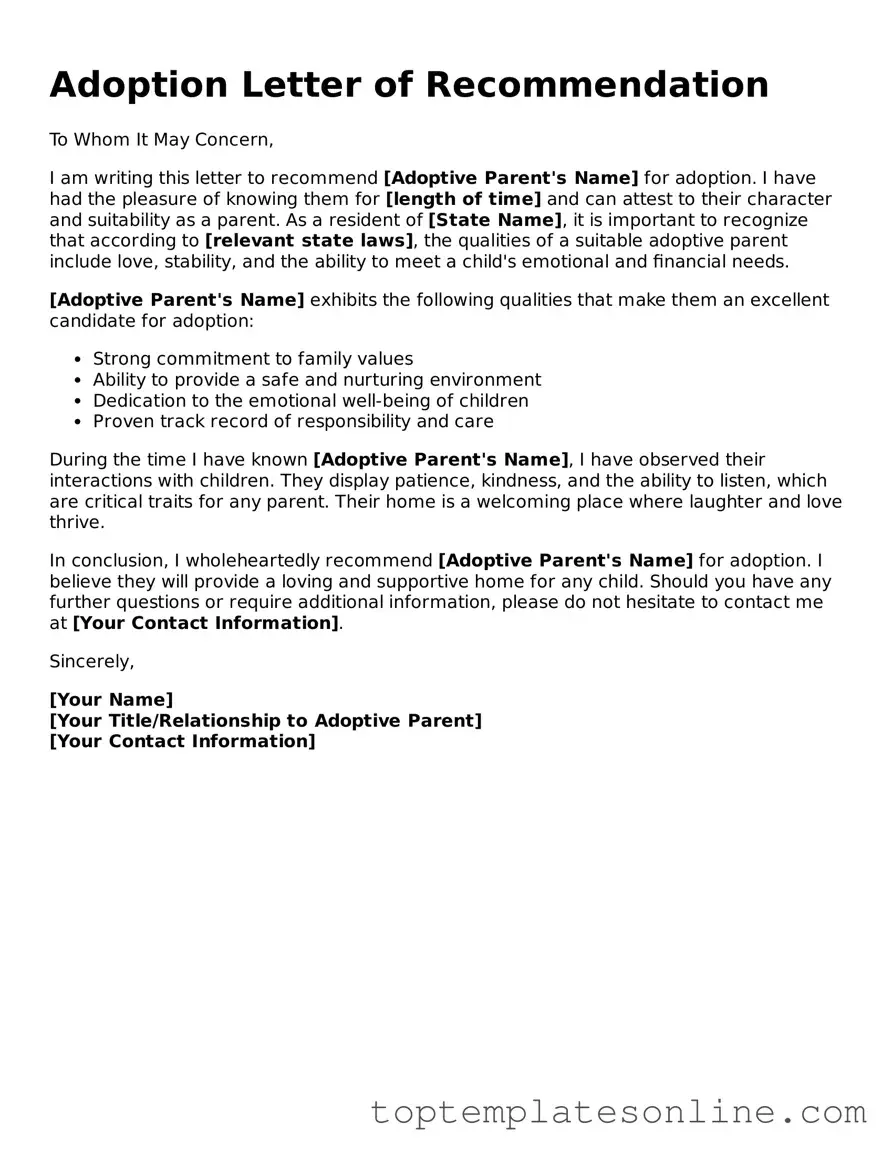Attorney-Approved Adoption Letter of Recommendation Form
The Adoption Letter of Recommendation form is a crucial document in the adoption process, serving as a testament to the prospective adoptive parents' character and suitability. This form is typically completed by individuals who know the applicants well, providing insights into their parenting abilities and overall readiness for adoption. A well-crafted recommendation can significantly impact the adoption decision, helping to ensure that children are placed in loving and supportive homes.
Customize Adoption Letter of Recommendation Here
